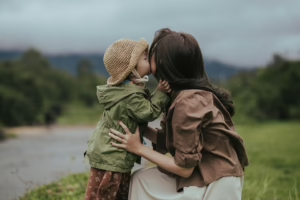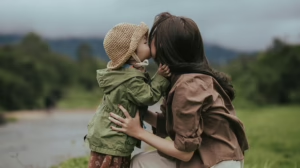Cultural Crossroads: The Interplay of Ideas and Traditions
Introduction
Cultural crossroads refer to geographical, social, and metaphorical spaces where diverse cultures meet, interact, and influence one another. Throughout history, these intersections have shaped not only localized customs but have also contributed to the formation of global cultural identities. In this article, we will explore the multifaceted nature of cultural crossroads, examining the processes of cultural exchange, adaptation, and innovation. We will delve into the historical contexts, examine contemporary examples, and reflect on the future trajectories of these interactions.
The Historical Context of Cultural Crossroads
Cultural crossroads have existed since the dawn of civilization. Ancient trade routes such as the Silk Road and maritime networks allowed for not just the exchange of goods but also ideas, languages, and philosophies. These routes facilitated the spread of religions, technologies, and artistic styles, shaping cultural landscapes across continents.
For instance, the Silk Road connected East Asia with the Mediterranean, enabling the transmission of goods like silk, spices, and precious metals, but also fostering the exchange of intellectual and spiritual ideas. Buddhism, which originated in India, spread to East Asia, transforming cultures along the way. Similarly, the spread of Hellenistic culture, following the conquests of Alexander the Great, exemplifies how contact between diverse peoples can generate rich cultural amalgamations.
Cultural Exchange: A Mechanism of Change
Cultural exchange acts as a catalyst for change, often resulting in hybrid cultures that encapsulate various influences. The concept of “creolization” refers to this phenomenon, where diverse elements from distinct cultural backgrounds merge to form new, dynamic cultures. This process is particularly visible in urban centers that serve as melting pots, attracting migrants from varying backgrounds who contribute to a vibrant cultural scene.
Contemporary examples abound in cities like New York, London, and Tokyo, where global influences permeate local life. Food culture, for instance, showcases this fusion—dishes like sushi burritos or tacos infused with Asian flavors illustrate the ongoing negotiation of cultural identities through culinary practices.
Case Study: New Orleans
New Orleans serves as a prime example of a cultural crossroads characterized by unique historical and social conditions. The city’s history of colonization, African slavery, and immigration has created a melting pot of cultures, resulting in a distinctive blend of traditions influencing music, cuisine, and festivals.
Jazz, a genre born from African, European, and Caribbean musical traditions, illustrates how cultural elements intersect. This blending not only creates new art forms but also challenges the boundaries of cultural identity, allowing individuals to navigate multiple heritages.
The Role of Language in Cultural Crossroads
Language plays a pivotal role in cultural crossings, serving as both a medium of communication and a carrier of identity. Linguistic exchange often occurs in multicultural environments, resulting in pidgins, creoles, or new dialects that reflect cultural interactions.
Moreover, language can shift and evolve when different cultures meet, leading to the rise of loanwords or the adoption of new grammatical structures. For instance, the influence of Spanish lexical items in English, especially in regions with significant Latin American populations, highlights how linguistic landscapes are reshaped through cultural interaction.
The Emergence of Pidgin Languages
Pidgins, simplified languages that arise in contact situations where speakers of different languages seek to communicate, represent another fascinating outcome of cultural crossings. These languages often incorporate elements from multiple linguistic traditions. A classic example is Tok Pisin in Papua New Guinea, which arose due to the interactions between indigenous populations and European traders.
In recent years, digital communication has hastened the process of linguistic exchange, creating new forms of language use that transcend geographical boundaries. Social media platforms enable the rapid spread of slang, memes, and emojis, portraying the fluidity of language shaped by cultural cross-pollination.
Artistic Expressions: A Gallery of Interwoven Cultures
Art serves as a crucial medium for expressing the interplay of cultural traditions. From visual arts to performing arts, the merging of different cultural influences creates works that resonate on multiple levels. The globalized art scene—characterized by transnational collaborations and the exchange of artistic ideas—demonstrates the continued relevance of cultural crossroads in contemporary society.
Case Study: The Harlem Renaissance
The Harlem Renaissance illustrates how cultural exchange can produce significant artistic movements. Emerging in the early 20th century, this cultural artifact in New York involved a confluence of African American traditions and broader cultural influences, including European artistic movements and the intellectual currents from the African diaspora.
Writers like Langston Hughes, musicians like Duke Ellington, and visual artists such as Aaron Douglas exemplified this multifaceted exchange, drawing inspiration from African heritage while engaging with contemporary Western artistic trends. The Renaissance not only uplifted African American culture but also left an indelible mark on mainstream art and literature.
Challenges and Conflicts in Cultural Crossroads
While cultural crossroads create opportunities for interaction and exchange, they also give rise to challenges and conflicts. As cultures collide, issues of power dynamics, appropriation, and identity politics can emerge.
Cultural appropriation, for instance, is a contentious topic in contemporary discourse, often highlighting the imbalanced power relationships that can exist in cross-cultural exchanges. When elements of a marginalized culture are adopted by a dominant group without proper acknowledgment or understanding, it can lead to feelings of exploitation and alienation.
Example: Fashion and Cultural Appropriation
The fashion industry frequently faces criticism for instances of cultural appropriation—designs and motifs borrowed from various cultures without acknowledgment or respect for their significance. The controversy over high-profile brands appropriating Indigenous designs or African textiles underscores the importance of understanding cultural contexts and recognizing the sources of inspiration.
The Digital Renaissance: Cultural Exchange in the 21st Century
The arrival of the digital age has reshaped the landscape of cultural exchange. The Internet facilitates instant communication and access to diverse cultural expressions, blurring the lines between local and global. Social media platforms enable users to share and engage with a multitude of cultural artifacts, creating a new dynamic in the ways individuals and communities interact.
YouTube, for instance, functions as a global stage, where viral trends, dance challenges, and creative interpretations of cultural forms can emerge from anywhere in the world. This democratization of cultural production allows for a richer exchange of ideas and practices while posing questions about ownership and authenticity.
The Future of Cultural Crossroads
As we look toward the future, cultural crossroads will continue to evolve. Globalization, migration, and technology will further influence how cultures intersect and interweave. We anticipate the growth of hybrid cultural practices that reflect the complexities of identity in an interconnected world.
However, the challenge remains to navigate these intersections with sensitivity and awareness. Cultivating respect for cultural heritage, understanding historical contexts, and engaging in equitable exchanges will be crucial to fostering a more inclusive and harmonious global cultural landscape.
Conclusion
Cultural crossroads serve as vital hubs of exchange, creativity, and innovation. They embody the potential for cultural evolution as ideas and traditions interact and transform. As we traverse these intersections, we must remain cognizant of the dynamics at play, advocating for respectful and equitable engagements that honor the rich tapestry of human experience.
Modern Footnote Sources
^1. M. H. Hair, “The Silk Road and Its Impact on the Development of Religion,” International Journal of Historical Studies, vol. 12, no. 3, 2020, pp. 45-67.
^2. J. Z. H. Barker, “Creolization: The New Culture of Globalization,” Cultural Studies Review, vol. 15, no. 2, 2021, pp. 26-39.
^3. A. Doe, “New Orleans: A Cultural Mosaic,” Journal of American Folklore, vol. 134, no. 2, 2021, pp. 58-72.
^4. B. Tsai, “The Influence of Language Contact in Pidgin Languages,” Linguistic Studies Today, vol. 5, no. 1, 2022, pp. 14-30.
^5. L. E. Johnson, “The Harlem Renaissance: An Exploration of Cultural Exchange,” Sociology of Arts Review, vol. 10, no. 4, 2022, pp. 99-115.
^6. R. M. Liu, “Fashion as Cultural Appropriation: An Analysis,” Fashion Theory: The Journal of Dress, Body & Culture, vol. 25, no. 3, 2023, pp. 165-182.
^7. S. V. Patel, “Digital Culture: The New Age of Cultural Exchange,” Journal of Media Studies, vol. 21, no. 3, 2023, pp. 205-220.
This exploration of cultural crossroads offers insight into the rich interplay of ideas and traditions that shape our world, emphasizing both the transformative power and the inherent complexities of cultural exchange. As we navigate these intersections, our commitment to understanding and respecting diverse cultural narratives will pave the way for future encounters and collaborations.


























Add Comment